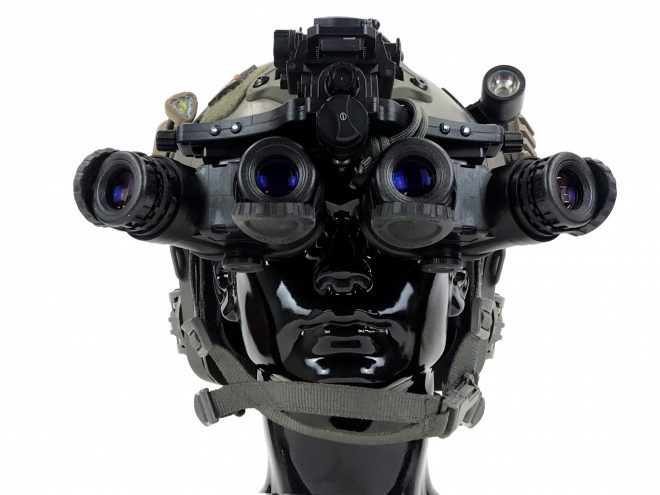In terms of night vision goggles, there is a hierarchy. The more tubes the better. The penultimate night vision goggle is the PNVG (panoramic night vision goggles) also known as Quad Tubes. Last year we got to take a look through ANVIS 10. Last June we got to check out the $40k GPNVGs.
Well, now there is a Quad Tube Night Vision Goggle (QTNVG) for the masses.
QTNVG Housing
The QTNVG comes from the same Chinese manufacturer as the ATN PS-31 housing. The objective lenses, battery cap and power knob are all the same.
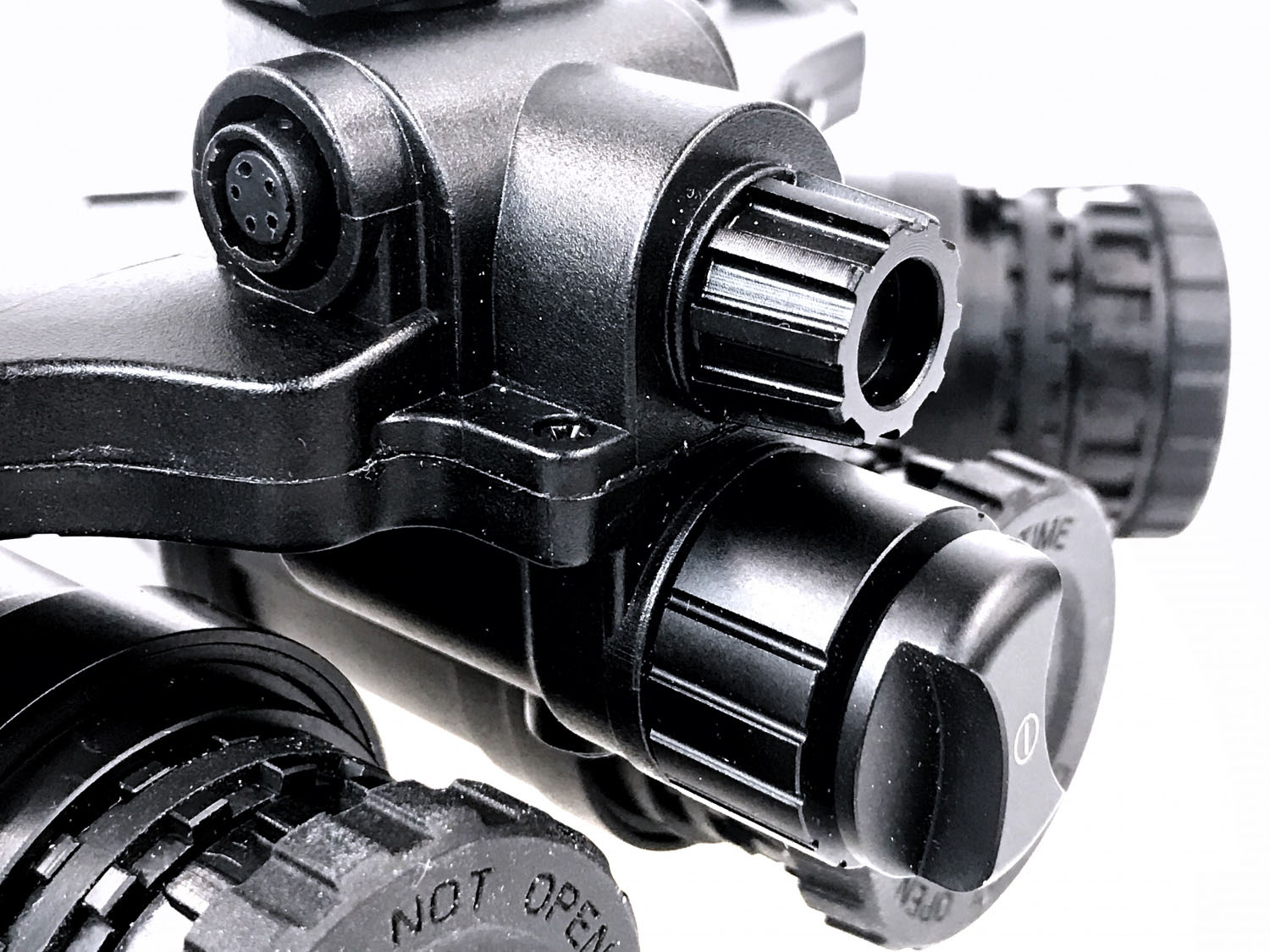
One difference, the remote battery pack cable is 5 pins.
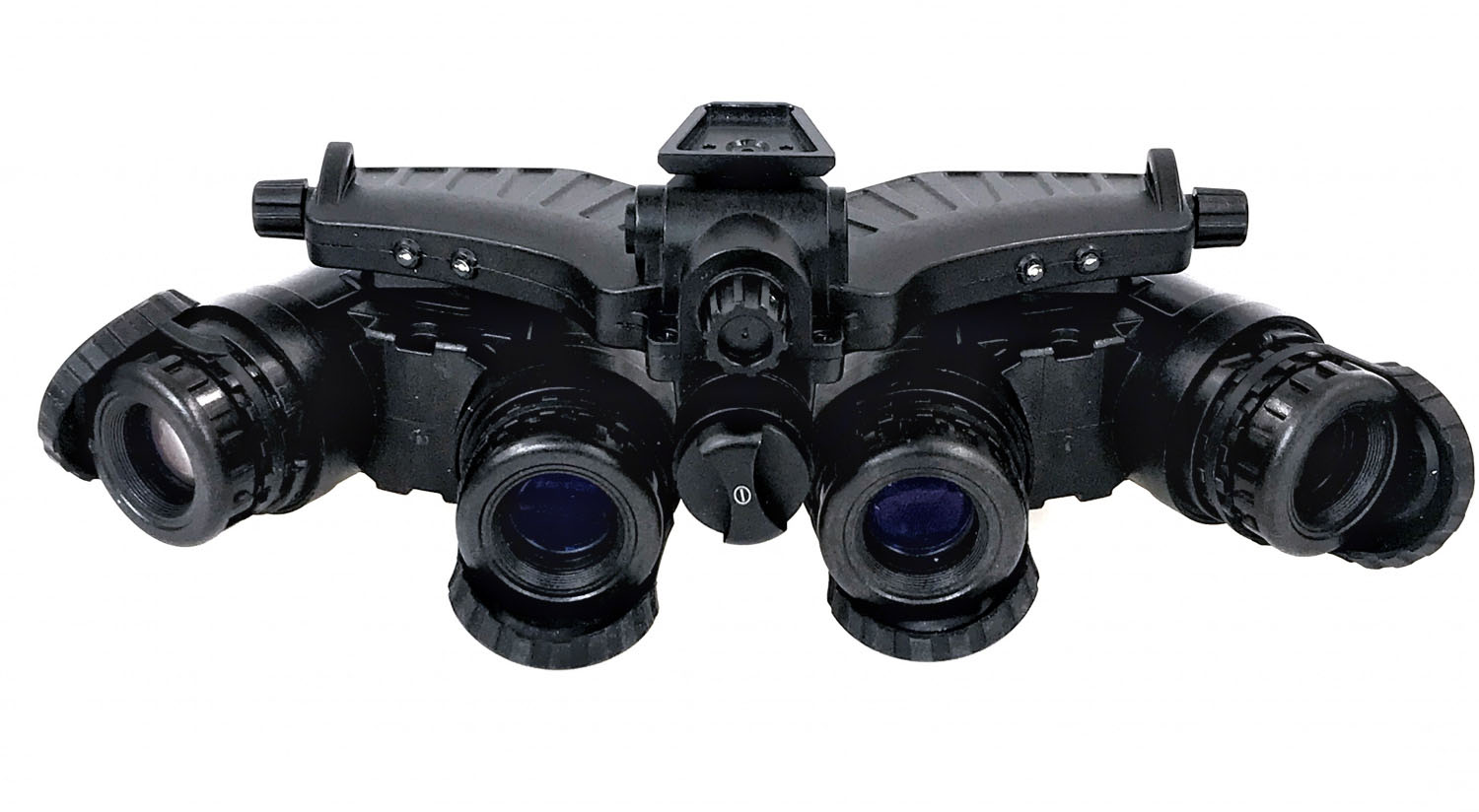
Just like the L3 GPNVGs, the QTNVG siamese pods are removable however, as far as I know, they do not have a battery pack to power the monocular separately. Also, the design is a V-shaped dovetail whereas the L3 version uses a U shaped dovetail. Also, you will notice there are three contacts compared to L3’s design that only has two contacts. This is to power the tubes and deliver power to the LED indicator in the monocular pods.
Just like the GPNVG, the pods are held in place with a hex screw.

Besides an LED indicator the QTNVG has something the US PNVGs never had, adjustable diopter. The ANVIS 10 and GPNVG use clip-on diopters and they are rumored to be extremely expensive. They snap onto the back of the fused eyepieces. The QTNVG has a large dial on the bottom of the pods. You turn them and a pair of lenses, between the intensifier tubes and rear eyepiece, move forwards or backwards to adjust for your eyes. In front of that dial is the purge screw. Each monocular pod is independently purged.

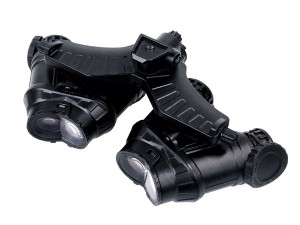
Just like the PS-31, the QTNVG has IR LEDs. There is a set on either side of the bridge. For each side, there is an IR LED and a light sensor LED. At both ends of the bridge are molded lanyard loops and the pupillary adjustment knob. This translates the pods left and right to fit your eyes.

There is a remote batterypack that comes with the QTNVG. It looks like the PVS-31 backpack but it uses 4xCR123 rather than 4xAA batteries. It also lacks the built in IR LED strobe in the backpack.

Using The QTNVG
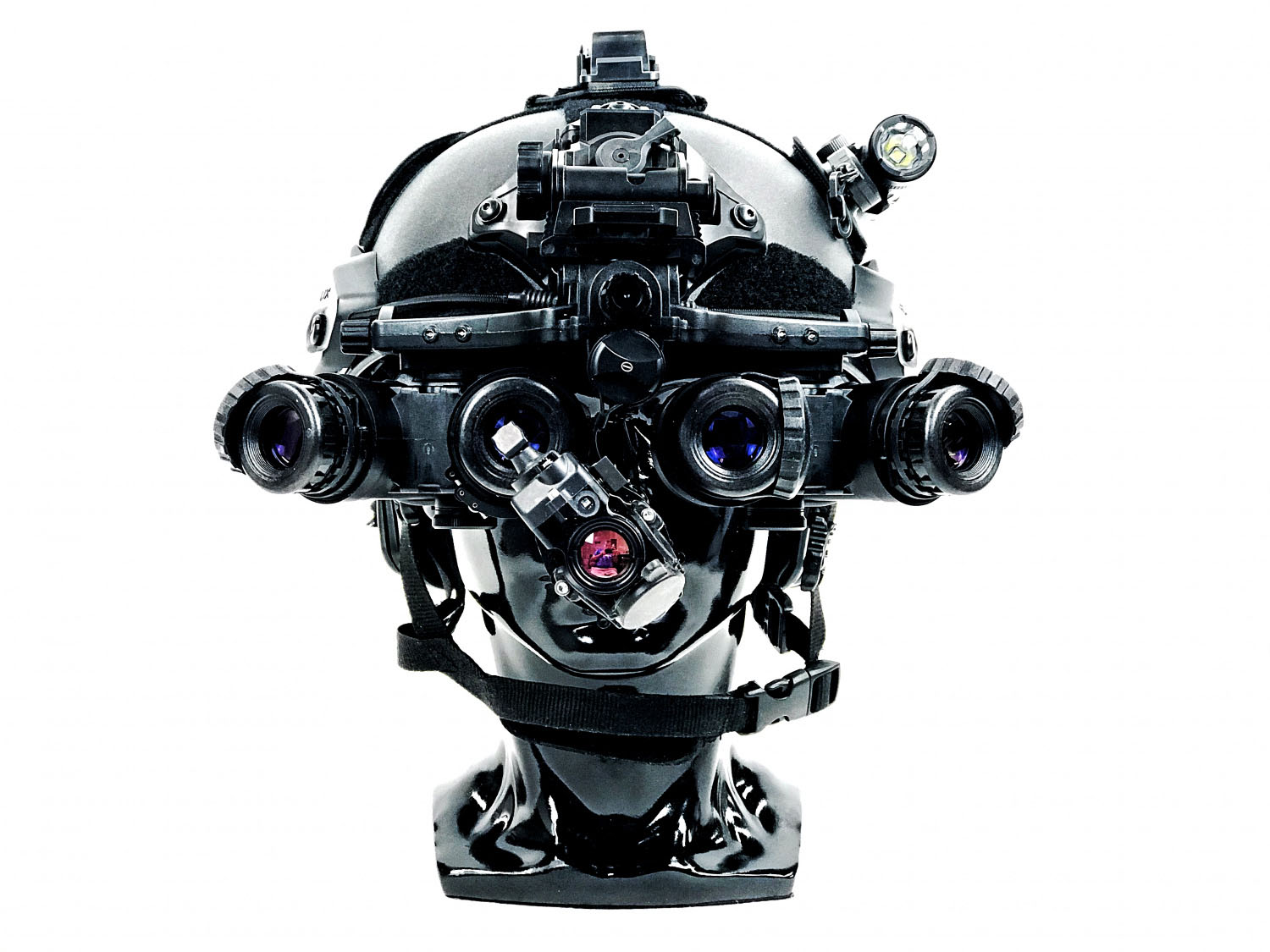
Having briefly tried the ANVIS10 and GPNVG, the QTNVG is somewhere in between the two. The ANVIS10 goggle was made for aviation purposes so they are not robust. To make matters worse, the ANVIS10s are long since discontinued and they are extremely proprietary. The lenses and image intensifier tubes only work in those housings. You can find surplus ANVIS10 for around $10k – $15k but if it breaks you are out of luck. Spare parts are very difficult to find. Ed Wilcox works on them but he says parts are near extinct. He would have to harvest parts from a donor goggle to fix a set. The GPNVGs from L3 are great but are so expensive at $40k USD.
Both the ANVIS10 and GPNVG require remote power via a remote battery pack. ANVIS10 has the slight advantage of using a COPS (Clip-On Power Supply) just like ANVIS 9 so you can power the goggles without a battery pack for handheld use. This is not possible for the GPNVG unless you buy their aviation bridge version that has a ball detent.
The QTNVG has onboard power just like the PS-31. It is powered by a single CR123.

The QTNVG is not lightweight, it weighs 30.5 ounces.

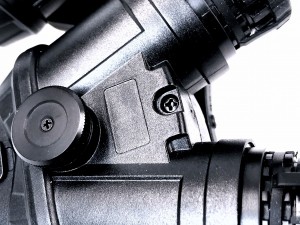
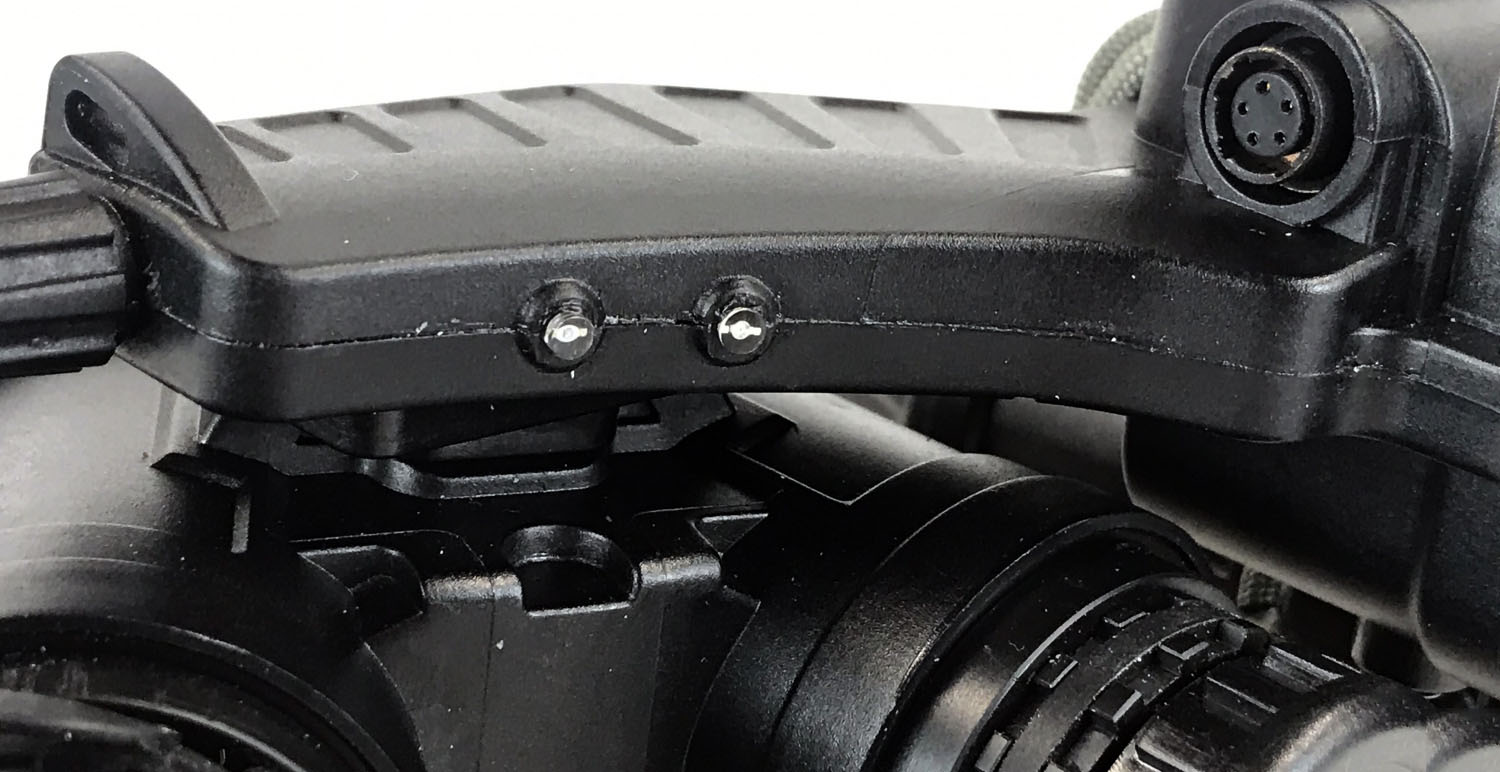
hat is just 2.5 ounces heavier than the L3 GPNVG. You will need additional counterweight to offset the weight.
Just like the PS-31s, the QTNVG uses 50° FOV lenses. Typical PNVGs like the ANVIS10 and GPNVG use 40° FOV lenses. Those only have a combined 97°. But since the QTNVG has a wider FOV it has a 120° FOV.
ANVIS10 only comes with green phosphor tubes and GPNVGs are white phosphor. With the QTNVG you can put whatever you want inside. They use 10160 tubes just like any standard binocular night vision goggle.
PNVGs like the QTNVG is basically a set of binos with monoculars on either side. Your main view is provided by the two inboard tubes. The outboard tubes just add more information through your peripheral view. You can turn your eyes to the side and look out through either outboard tube but for the most part, they are there to add to the view. You can actually use blemished tubes in the outer pods.
The right outer tube has a lot of blems in it and while I can see it in my peripheral vision, I don’t notice it unless I turn my attention and focus on it.
You will notice a bit of edge distortion. That is similar to the PS-31. The 50° FOV lenses have this distortion but it is only noticeable if the lenses are not positioned correctly to your eyes. The lenses have a sweet spot where the image is clean and undistorted. You need to adjust the pupillary distance so the middle pods are centered in front of each corresponding eye. You also need to adjust the distance the eyepieces are from your eyes. Once you have the goggles setup you see everything perfectly.
4 > 2 > 1
Quad tubes are better than binos especially when you use them correctly for the appropriate task. Dual tube night vision is the best all-around goggle setup for most activities. However, a QTNVG gives you such a wide FOV there are certain uses that nothing else will work better or as good. Driving a car at night without lights on is revelatory when using panoramic night vision goggles. I have driven under panos and I don’t want to use anything else. With the wider FOV, I can see both A-pillars. I can look at my driver’s side rearview mirror as well as the center rearview mirror without having to move my head. Since the FOV is so wide I can see throughout my entire windshield without turning my head.

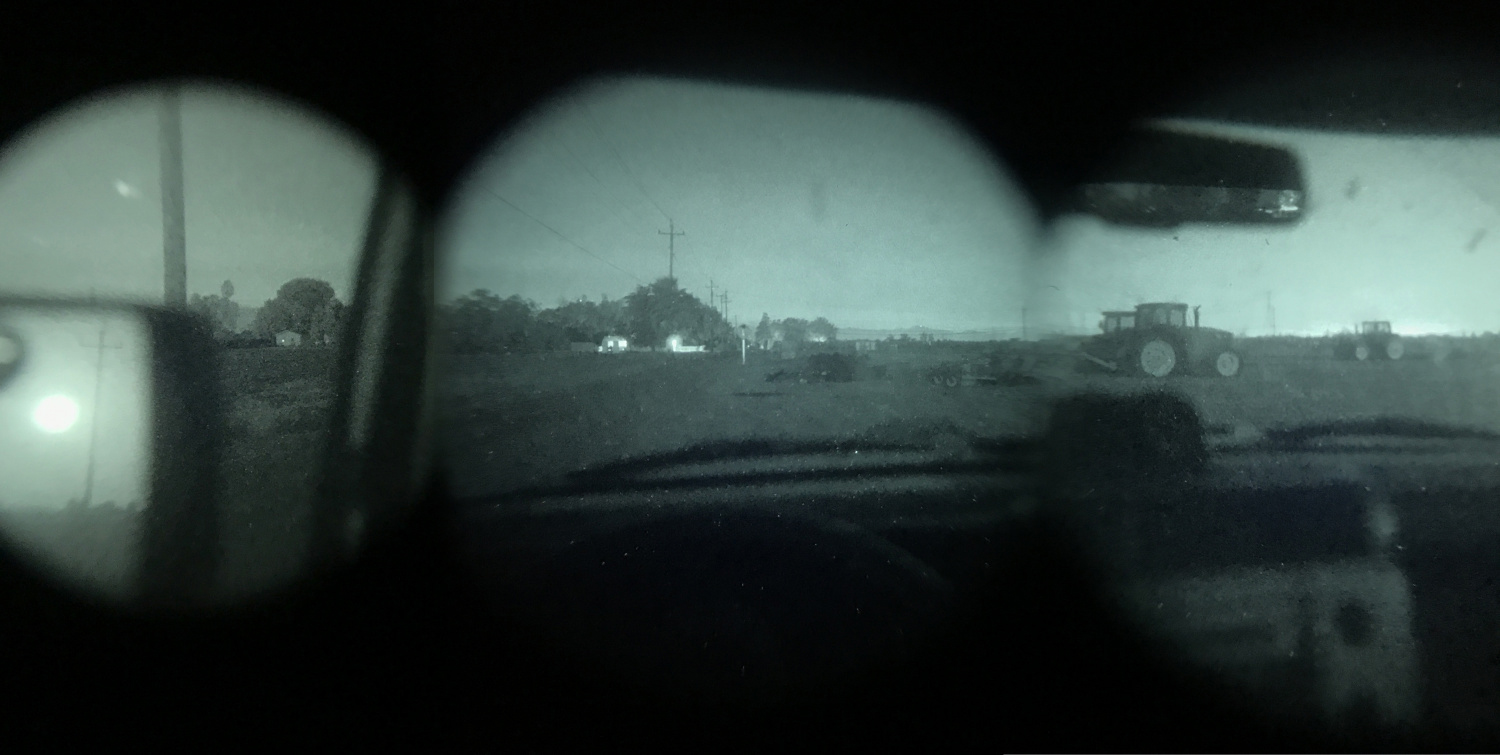
Room clearing is also where panos shine. Normal night vision is either 40° or 50°. The extra 10° is not a big enough difference but 97° and 120° is tremendous. When entering a room you can see the entire room and you do not need to pan your head to scan, you just see it all through the goggles. Yes, you should turn your head so your main area of focus, the two inboard tubes, is pointed at your subject that you want to look at. But you do not have the problem of tunnel vision like typical night vision goggles. You can combine a PAS 29 COTI to get Fusion Panos.

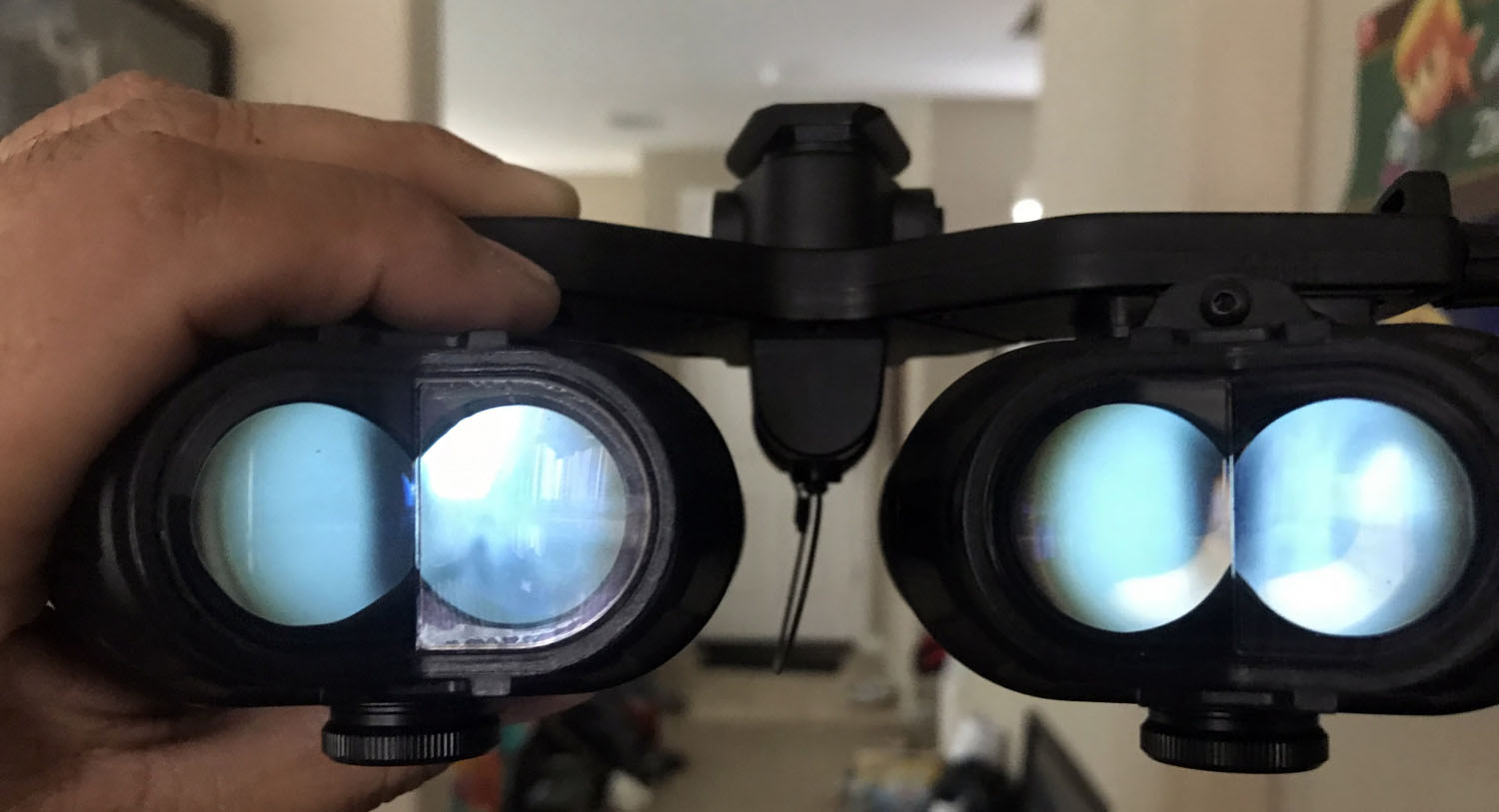


Just like the PS-31, the 50° lenses make the COTI image seem smaller.

The one downside to the QTNVGs is the same problem with GPNVGs or ANVIS10 they are very wide. So wide that your real peripheral vision is blocked. This is partly due to the QTNVGs needing to be positioned closer to your eye than other pano goggles. The closer something is to your eyes the harder it is to see around it. You need to be more aware of your surroundings with panos than with binos especially for things on the ground. You still need to tilt your head up and down to scan the ground if you plan on walking around.
Where can you get the QTNVG? They are available through Kommando Store. Built units will start at $11,999.99 for green phosphor thin filmed Elbit XLS, $12,999.99 for thin filmed white phosphor Elbit XLS and $14,999.99 for the higher grade white phosphor Elbit SLG. Compared to alternative panoramic night vision goggles this is a reasonable and obtainable pano for the masses. You could spend the same amount of money on a set of ANVIS10 but the fear of breaking them is too much especially since it is very difficult to get replacement parts. The GPNVG is $40k and that is very hard to justify. With the QTNVGs you can have your choice of what tubes go inside, they use standard 10160 image intensifier tubes so it’s easy to replace or upgrade. While the lenses are a bit proprietary, they are the same as the PS-31, at least the objectives are the same. So it would be easy to get replacements in case you break something. And since the goggle is relatively new and actively being sold, support and replacement parts should not be an issue. It has been a bucket list item to have quad tube night vision goggles and I have achieved that dream a lot sooner than expected.
Post time: Jun-23-2022

